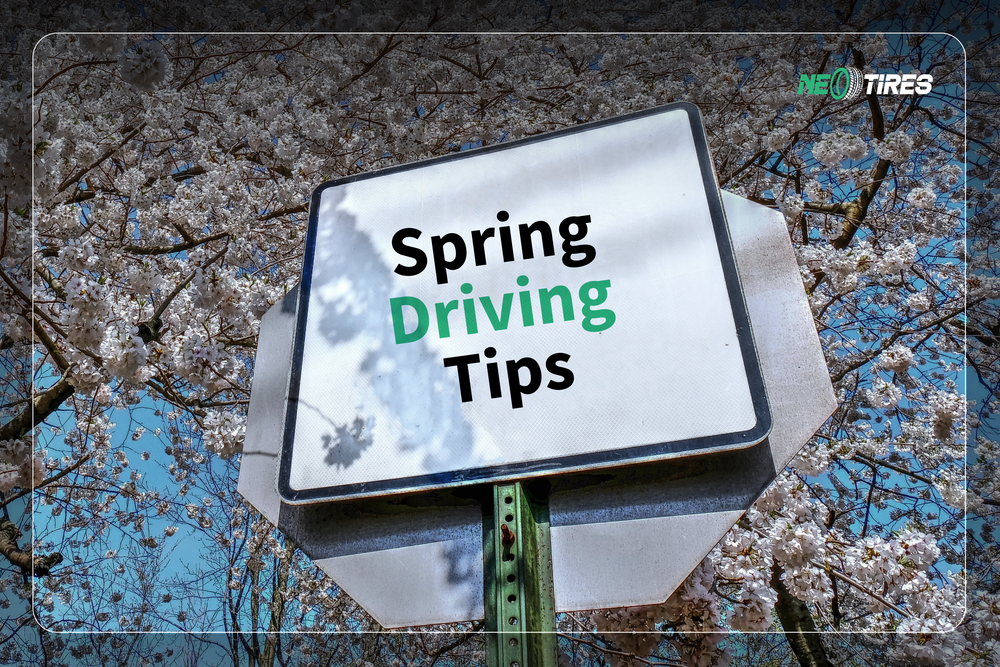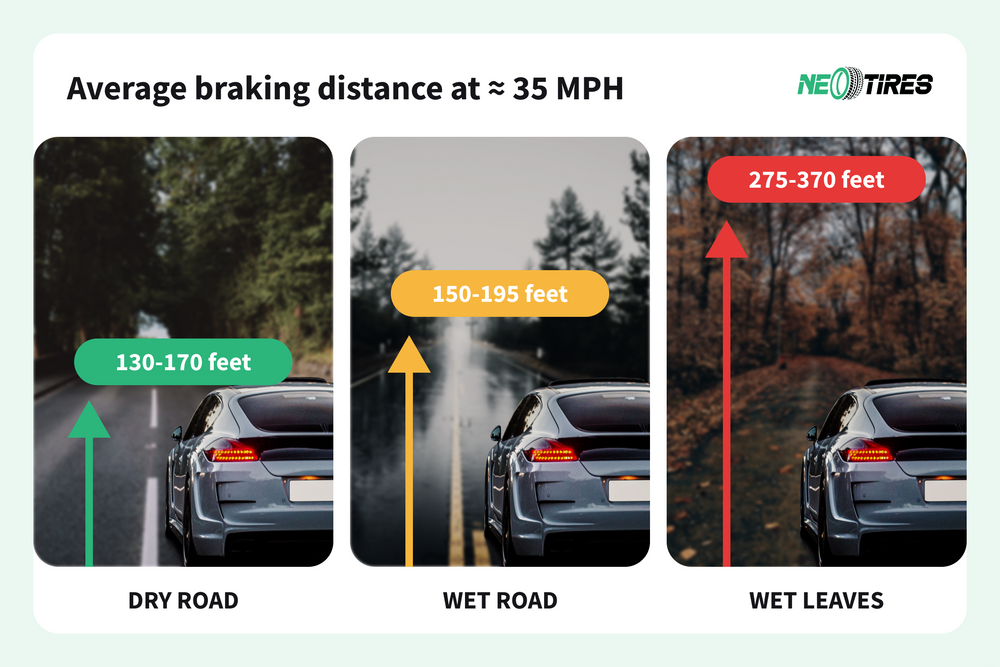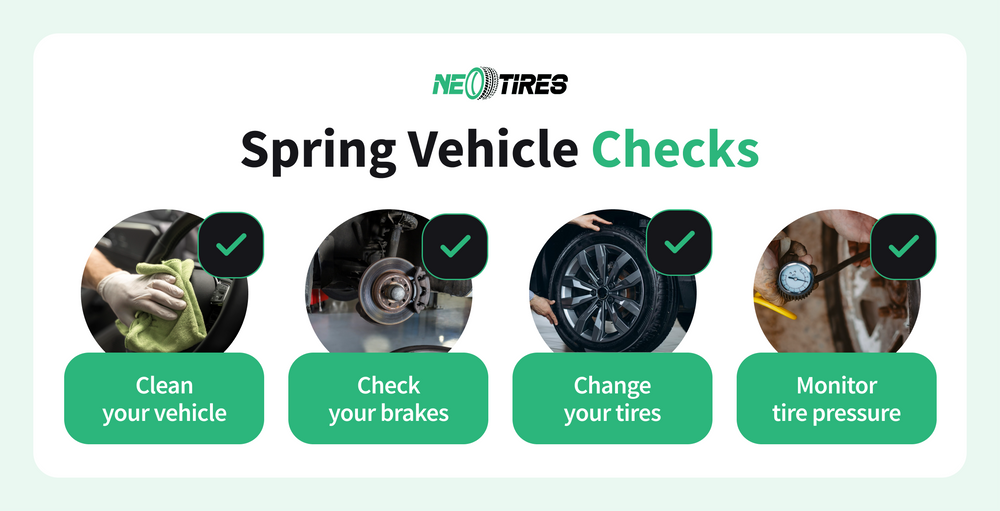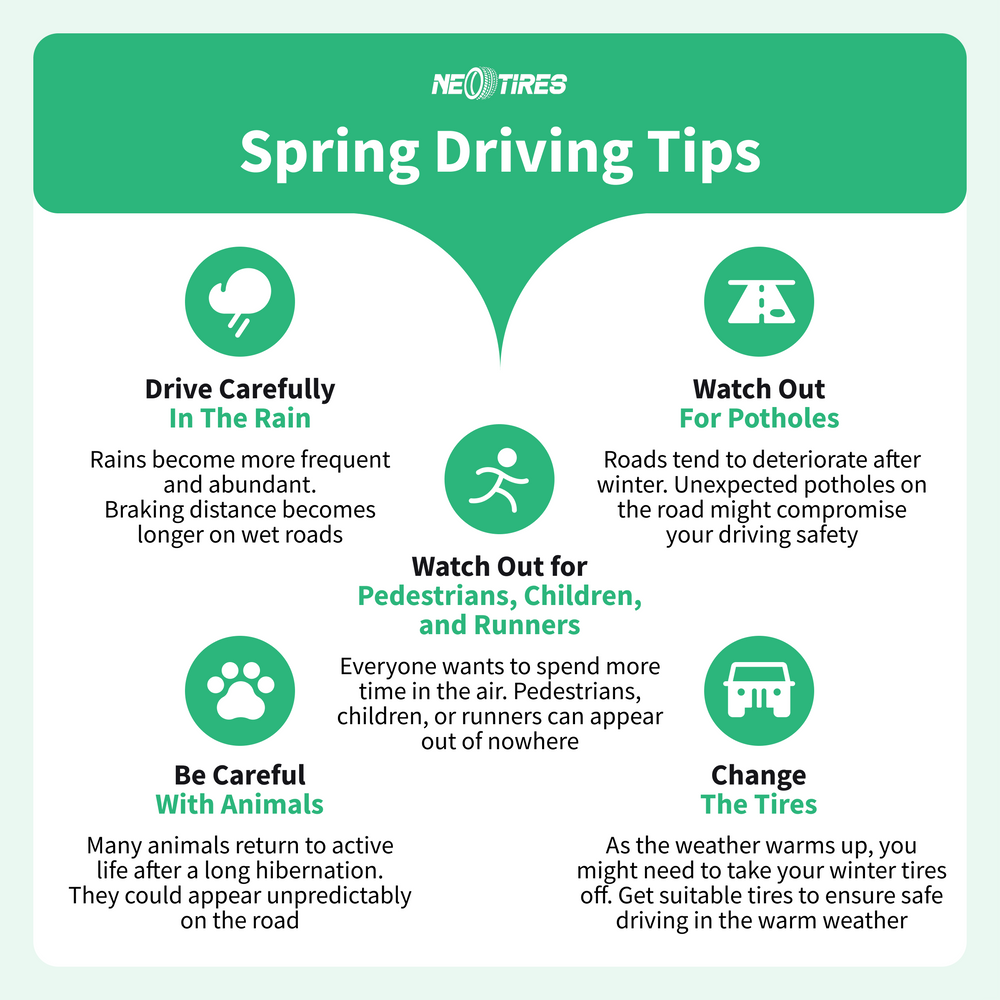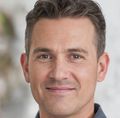Spring brings new driving challenges and it's high time to refresh your vehicle after months of harsh winter conditions. Ensuring your car is in top shape is essential considering the potholes and hydroplaning risks that appear as winter fades. This section provides key spring-driving tips to smooth your transition into the season with minimal side effects for your tires, vehicle, and driving safety.
Spring Vehicle Maintenance
The vehicle should be checked as the spring season begins, regardless of whether it shows signs of damage or not. Drivers are advised to check tires, battery (if driving an EV), windshield wipers, brakes, fluid levels, lights, and signals.
| Vehicle Part | What to Check | Why It’s Important |
| Tires | Inspect tread depth and check for damage | Ensures good traction and prevents blowouts. |
| Battery | Check for corrosion, and clean terminals. | Spring weather can affect battery performance. |
| Windshield Wipers | Check wipers and replace them if necessary. | Spring showers require clear visibility. |
| Brakes | Test brakes for responsiveness and check for wear. | Vital for maintaining stopping power in wet conditions. |
| Fluid Levels | Top-up oil, coolant, and brake fluid. | Prevents engine overheating and ensures smooth operation. |
| Lights and Signals | Ensure all lights and signals are working properly. | Important for visibility and signaling other drivers. |
Tips for New Drivers: How to Stay Safe in Spring Conditions
New drivers may encounter more challenges with spring driving due to unpredictable weather patterns combining even snow and rain showers. New drivers must prepare properly for this period, namely by:
- knowing their brakes: gentle and gradual braking is recommendable to avoid losing traction on slippery surfaces;
- adjusting for wet roads: slowing down and keeping a safe distance when driving in the rain is highly recommended since spring showers can leave the roads slippery;
- checking the weather: checking the forecast before setting out can be helpful to avoid sudden weather changes such as fog or rainstorms.
These safe driving practices can help new drivers navigate spring roads with more confidence.
Road Trip Tips for Spring Travel
Road trips become more frequent with the arrival of spring. Consider the following recommendations to ensure a smooth and safe journey once you head out for a weekend gateway or a longer adventure:
- plan the route and check for road closures to save time;
- provide emergency essentials like a first aid kit, spare tire, jumper cables, and all other tools to replace a tire;
drive during daylight if possible to avoid fatigue; - be vigilant of increased traffic and wildlife (pedestrians, cyclists, children, and wildlife animals are more likely to cross roads, especially in rural areas).
Safety Tips for Truck Drivers: Navigating Spring's Challenges
Spring driving can be challenging for truck drivers due to tire blowout risks (due to potholes), longer driving hours, and sudden weather changes. The following driving practices are recommended to reduce the risks:
-check cargo: double-check the truck cargo for secure fastening, especially in spring windy conditions;
-stay vigilant for weather changes: adjust your driving for rainy, windy, and foggy conditions as the braking distance varies in each scenario;
-watch for road potholes and debris: potholes become bigger in spring after snow melts and spring storms bring fallen branches on the road.
What Are The Spring Driving Challenges?
The spring driving challenges include wet roads, potholes, stormy winds, more pedestrians, cyclists, runners, children, and more wildlife.
- Wet roads
Spring wet roads increase the hydroplaning risks and make the braking distance longer. Melting snow and/or heavy rains lead to the formation of water puddles. Reduce the speed if you are not sure that puddles are passable. Also, avoid these areas if there are alternative routes.
- Potholes
Hitting potholes can damage tires, suspension, and wheels, and can cause sudden jolts, leading to loss of steering control. The outbreak of potholes in the spring is explained as follows: water freezes and expands in the small cracks of the roads and asphalt during the winter. The (expanded) ice melts as the weather warms, leaving much larger cracks behind. Reducing speed and maintaining a firm grip on the steering wheel is recommended in areas with road potholes.
- Wind
Spring wind can bring tree branches, debris, and loose gravel onto the road endangering the driver's and passengers' safety. Keep a safe distance and control your speed to have enough reaction time in front of a possible car braking or tree branches falling in front of you.
- Children, Pedestrians, Runners, and Motorcyclists
Children, pedestrians, runners, and motorcyclists spend more time outside in spring, making driving more difficult than usual. Be alert for them, especially when changing lanes, and in dark conditions with reduced visibility. Take into account blind spots that can confuse you and make motorcyclists and pedestrians unobservable.
- Wildlife On The Roads
The outbreak of animals on the roads is higher in spring, especially near forests and rural areas. Stay vigilant and maintain judicious speed to avoid sudden collisions.
Vehicle Checks: Spring Time
The following vehicle check-ups are recommended to ensure full vehicle preparedness for the season: cleaning the vehicle (to remove winter road salts and grip chemicals), checking the brakes (to ensure road salt did not affect brake rotors), changing tires (switch from winter to all-season tires, if applicable for the area), and ensuring correct tire pressure (higher spring temperature can cause overinflation due to air expansion within the tire).
When To Switch From Winter To All Season Tires?
The recommended time for switching from winter to all-season tires is when the temperature hits 7C or 44.6 Fahrenheit, constantly. Unlike winter tires, all-season ones are a better option for wet roads, moderately warm temperatures, and dry conditions. Making any replacements is unnecessary if using all-weather tires. All-weather tires tipically do a great job in both cold and warm climates.
Spring Driving Tips: FAQs
What Are The Key Facts To Know About Spring Driving?
Spring driving requires special attention behind the wheel because of:
- larger number of potholes on the roads
- higher risks of hydroplaning and slipping due to rain and snow melting
- higher number of motorcycles, pedestrians, children, and runners on the roads
- possible appearance of animals on the road
- more intense wind that can bring obstacles on the driving surfaces
Should I Change Tires In Spring?
It's ok to keep using all-weather tires in spring after winter. These do a great job in warm weather. Replacing tires in spring is recommended if switching from winter to all-season or summer tires.
Why Trust Us?
The NeoTires team cares about our customer's driving experience. We want and can contribute to improving your vehicle performance in various conditions. We do this by offering the right tires. Our team has been passionate about tires for over 5 years. Our specialists test them, compare them, and review them from different aspects to understand which products are more suitable for certain conditions.
In addition, we are a tire dealer that keeps an eye on the big players in the industry like Bridgestone, Pirelli, Hankook, Nokian, Cooper, Goodyear, and others. We learn from them about various technologies and innovations and bring their best products to ensure ultimate performance and safety in our store.
With this in mind, you can count on us in one of these 4 scenarios:
- you need top-quality tires from the most reputable manufacturers;
- you need guidance and assistance in all tire-related matters;
- look for a reliable dealer ready to offer comfortable buying conditions and great prices for the best products;
- you need professional driving tips, maintenance recommendations, and informational support about driving, tires, and vehicles.
Our trained assistants and professional mechanics will ensure a friendly communication process and most importantly - result-oriented communication. We can't influence your driving conditions, but what we can do is help you perform the best in any of them. Drive safe and choose your tires wisely!




